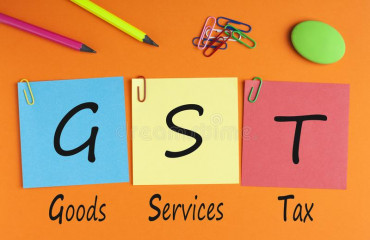
New Delhi: India's goods and services tax (GST) collection touched a record ₹2.10 trillion in April, reflecting robust economic growth, rising formalization and greater efficiency in tax collection.
New Delhi: India's goods and services tax (GST) collection touched a record ₹2.10 trillion in April, reflecting robust economic growth, rising formalization and greater efficiency in tax collection.
This is also the first time GST collection has crossed the ₹2 trillion mark, since the unified indirect tax regime was rolled out seven years ago.
"This represents a significant 12.4% year-on-year growth, driven by a strong increase in domestic transactions, up 13.4%, and imports, up 8.3%," a finance ministry statement said.
After accounting for refunds, the net GST revenue for April stood at ₹1.92 trillion, 15.5% higher than the same period last year.
Also read: India's political economy: Higher-for-longer policy rates pose peculiar problem
Coming after the second-highest monthly GST receipts of ₹1.78 trillion in March, the latest numbers indicate impressive economic growth, tax experts said.
"The consistent growth in GST collections, with this one being the highest collection ever, is a big cheer and reflects upon the strong domestic economy, especially given the fact that growth on account of domestic transactions is 13.4% as compared to imports which is at 8.3%," said Abhishek Jain, partner & national head, indirect tax, KPMG.
Jain also noted that another significant reason could be linked to deadline for GST audits and corresponding notices issued this year.
Central Goods and Services Tax (CGST) collection was ₹43,846 crore in April, while state Goods and Services Tax (SGST) brought ₹53,538 crore. Integrated Goods and Services Tax (IGST) was ₹99,623 crore, including ₹37,826 crore collected on imported goods.
GST from cess levied on automobiles, tobacco and aerated drinks was ₹13,260 crore, including ₹1,008 crore collected on imported goods.
Gross GST collection in FY24 reached ₹20.18 trillion for the first time, up 11.7% from FY23. This growth rate is higher than the 9.1% nominal Gross Domestic Product (GDP) growth projected for FY24 by the statistics ministry, reflecting the buoyancy in GST collections.
The statistics ministry had also said in its second advance estimate of GDP that net taxes on products were expected to grow 15.5% in FY24, faster than 10.6% in the year before.
Also Read: As currency markets face chaos, old-school solutions will be key
Finance ministry data also showed that the central government settled ₹50,307 crore to Central Goods and Services Tax (CGST) and ₹41,600 crore to State Goods and Services Tax (SGST) from the Integrated Goods and Services Tax (IGST) collected. This translates to a total revenue of ₹94,153 crore for CGST and ₹95,138 crore for SGST for April after regular settlement.
"With the next wave of GST reforms expected after the formation of the new government, the growth may be further accelerated," said Partik Jain, partner, PwC India, said. "It may also enable the government to take bolder decisions such as rate rationalization or bringing products such as ATF and natural gas under the GST ambit."
The robust GST collection shows the Indian economy is on a fast track to formalization, and businesses are rapidly becoming organized while coming into the mainstream, said Vivek Jalan, partner at Tax Connect Advisory Services LLP.
"The economy is thus getting set for a big-bang final Budget in July 2024 and looking towards bringing alcohol, petrol, diesel and real estate under GST on the one hand, and implementation of the Direct Tax Code replacing the age-old Income Tax Act on the other hand, along with implementation of the Global Minimum Tax," Jalan added.
Shravan Shetty, managing director at Primus Partners pointed to the formalization of the economy driven by increasing compliance, leading to rising collections. "We expect coming months to be close to the ₹1.7-2 trillion mark over the next few months, which should pick up as we enter the festive season post-rainy season. Key factors to consider include the current heat wave and its impact on manufacturing and services output. Also, the coming monsoon will impact the agricultural and rural economy which will determine GDP growth and GST collections in the second half of the year," he added.
